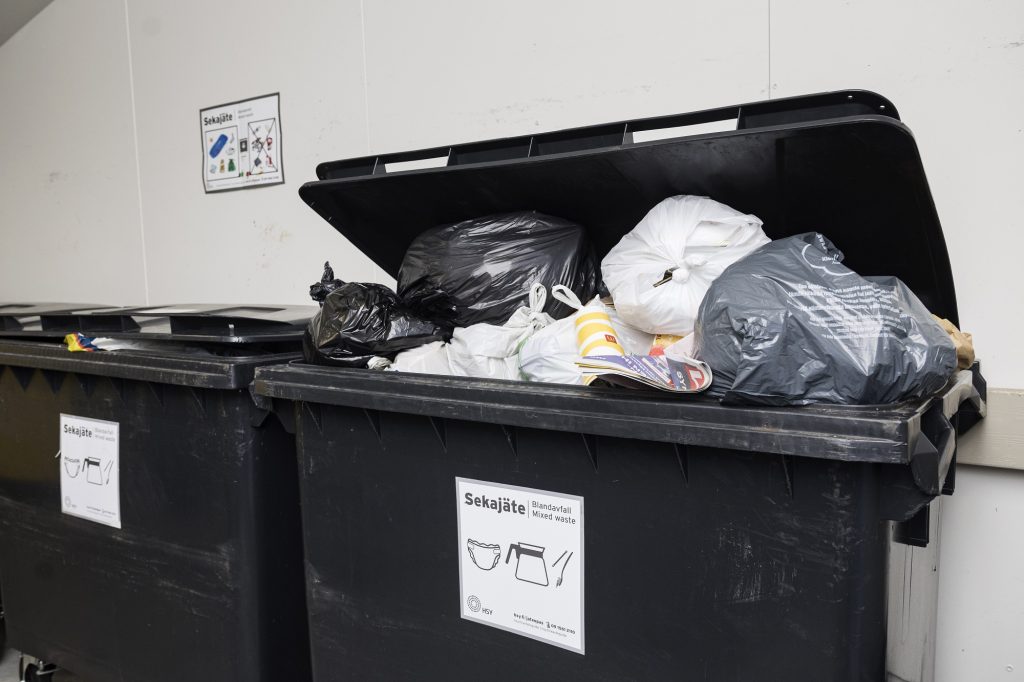Office desks, washing machines and televisions – tenants bring unsuitable items to Heka’s waste collection points every week
Every tenant has influence over the tidiness of the waste collection point of their building and how much Heka has to pay for waste management. A tidy building is also more pleasant to live in.
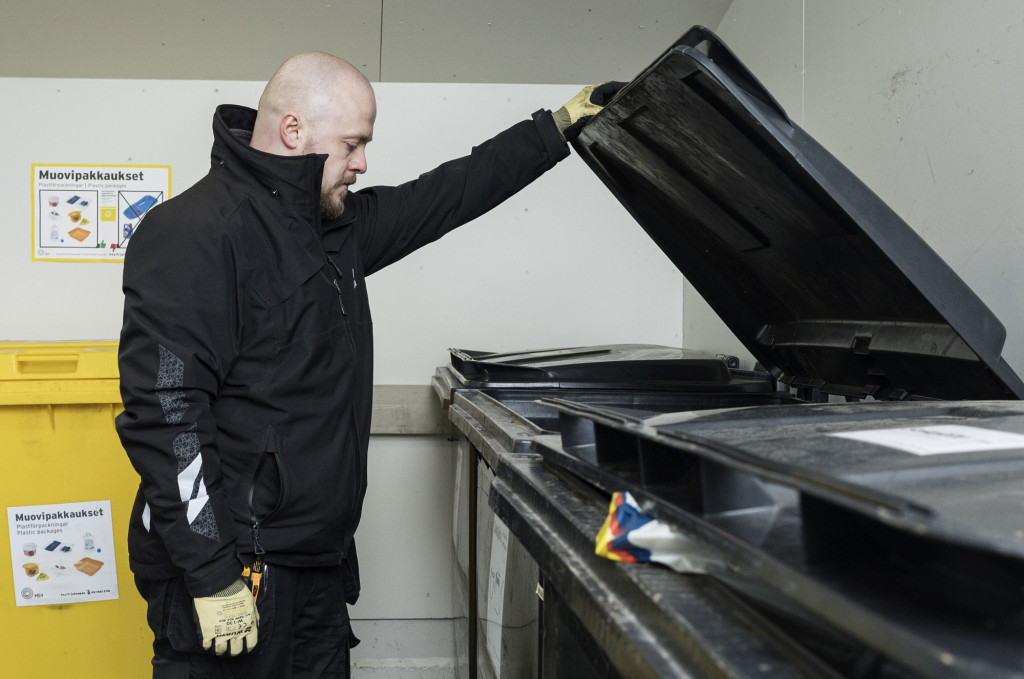
Maintenance Master Ville Laamanen opens the door of a waste collection point to check the situation: the middle of the space is blocked by a discarded desk and a clothes iron lies abandoned in the corner. Laamanen drives his tractor to the door of the waste collection point, lifts the desk and the clothes iron with the bucket of the tractor and transports them to a temporary storage container to wait for Heka’s cooperation partners to pick them up and recycle them appropriately. Earlier the same morning, Laamanen already removed a bed frame from another waste collection point.
“Tables, shoe cabinets, washing machines, televisions… I’ve even had to remove divan sofas from waste rooms,” says Laamanen about items that he has had to remove from waste collection points.
Plenty of unsuitable items end up in the waste collection points of Heka’s residential buildings every week. The waste collection points are intended for ordinary household waste, i.e. biowaste, waste paper and cardboard packages, plastic and glass packages, small metal items and mixed waste. Furniture and other large items, electrical and electronic waste and hazardous waste, such as paints and solvents, must be taken by every tenant to an appropriate disposal point, such as a Sortti station. Discarded household appliances and electronic devices can often be taken to a consumer electronics store free of charge.
Unsuitable items make moving about in the waste room difficult for tenants and waste collection workers alike, raise the waste management costs and thus the rent levels of buildings, and cause excessive work for the property maintenance department.
“Of course, we clean the waste rooms as fast as we can, but all of this takes up resources from fixing problems in people’s apartments,” Laamanen comments.
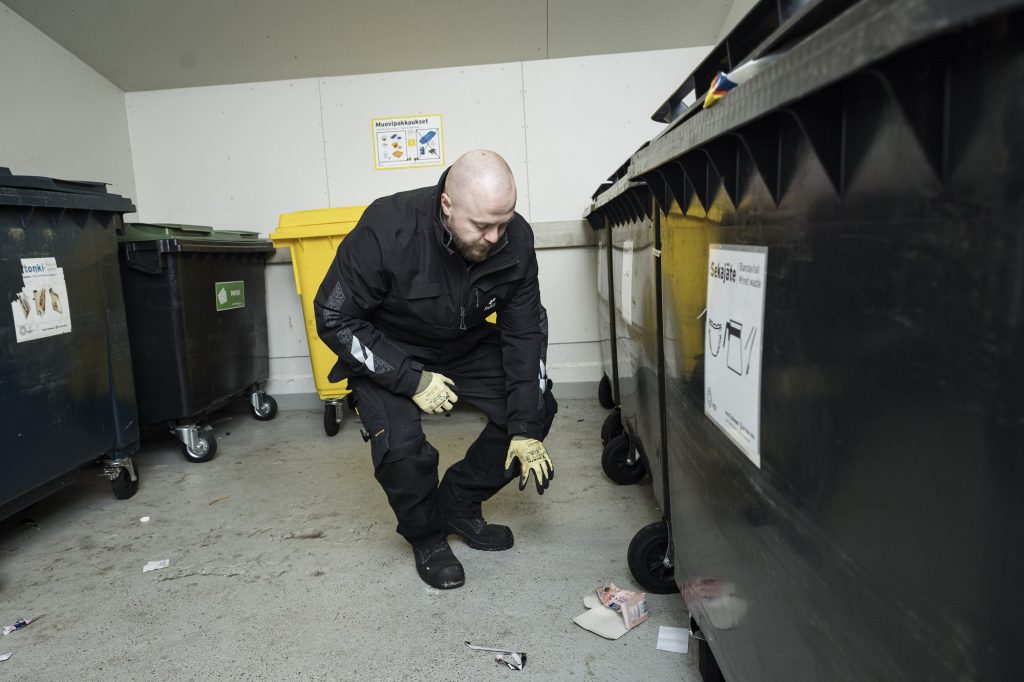
The job duties of Laamanen and Heka’s other maintenance masters include machinery work, such as ploughing and gritting, as well as small-scale repairs on properties and in apartments. Properties are primarily maintained by property maintenance operatives, who clean waste rooms, remove litter from yard areas and empty the waste bins of yards. One property maintenance operative is usually responsible for 1–4 properties.
Cleaning up waste collection points takes up time from other maintenance work
Laamanen is responsible for removing unsuitable items from the waste rooms of a total of 13 Heka buildings. Maintenance masters aim to check all waste collection points once a week. The inspection round is usually carried out on Monday and takes roughly 2–3 hours. If necessary, inspection rounds are also carried out later in the week if property maintenance operatives and tenants submit notifications. Heka asks that tenants submit a defect notification to report any unsuitable items at waste collection points, as well as missing sorting instructions or broken waste containers, lights, doors and locks.
In addition to the removal of unsuitable items, the work load of property maintenance operatives is increased by general untidiness in waste collection facilities and carelessly sorted waste. Laamanen says that some locations are tidier than others.
“Some locations are tidy, with only occasional pieces of rubbish on the floor. But there are also locations that we have to tidy up several times a week. Just before, as I was making my round, a colleague of mine picked waste off the floor of a waste room with a shovel. There were several shovelfuls of it. Sometimes it seems like people just open the door to the waste collection point, throw in their bag – and that’s it,” Laamanen laments.
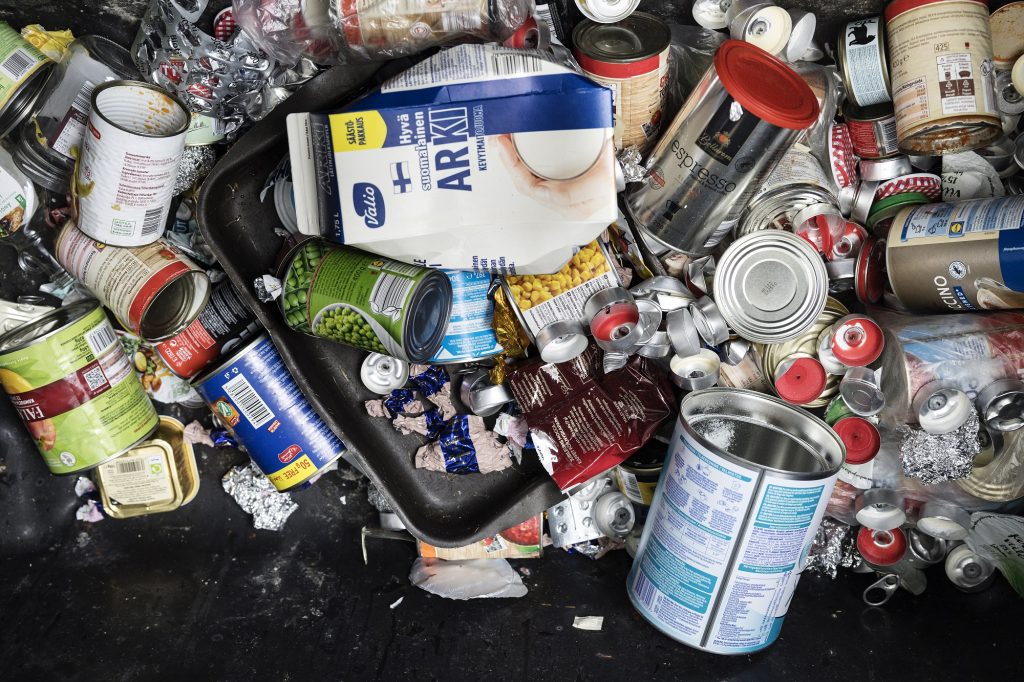
Typically, the greatest problem at waste collection points is that cardboard waste containers are overflowing. It is important to remember to flatten all cardboard boxes before placing them in the container so that they will take up as little space as possible. People should also be careful with biowaste: any scraps of food left outside waste containers and containers that are left open attract rats.
“All types of waste should be placed in their designated containers. And if the first container is full, you can take a few steps to place your waste in a less full container at the back,” Laamanen reminds people.
At the moment, roughly 40% of all waste collected by HSY consists of leftover food and other biowaste, the correct place for which is a biowaste container. Sorting biowaste is important, as it is used to produce compost soil and biogas. Any biowaste disposed of with mixed waste ends up incinerated. It also increases the moisture level of the waste mass and thus significantly reduces the amount of energy yielded from the incineration process. It is also important to sort waste such as glass, metal and plastic packages so that they can be utilised as raw ingredients for recycled materials.

Waste management costs affect rent levels
Waste sorting is not only environmentally friendly, but also beneficial from a financial perspective. Of all waste types, mixed waste is clearly the most expensive to collect. Heka aims to make waste management more efficient and achieve environmental and responsibility objectives by means such as instructing and encouraging tenants to sort their own waste as well as possible.
“All of the expenses we accrue are also reflected in how much rent our tenants have to pay,” comments Environmental Specialist Mikaela Lindfors from Heka.
“At Heka, our recycling rate continues to be slightly below the Finnish average, despite our efforts to instruct our tenants. Some tenants are active and enthusiastic, but others are much less so. Taking items such as furniture to recycling points is also very costly to us,” Lindfors comments.
In 2022, the recycling rate for household waste in the Helsinki Metropolitan Area was roughly 46%. The objective set by the EU stipulates that by 2025, EU member countries must recycle at least 55% of their municipal waste. The goal set for the HSY area is to increase the recycling rate of the Helsinki Metropolitan Area to 60%.
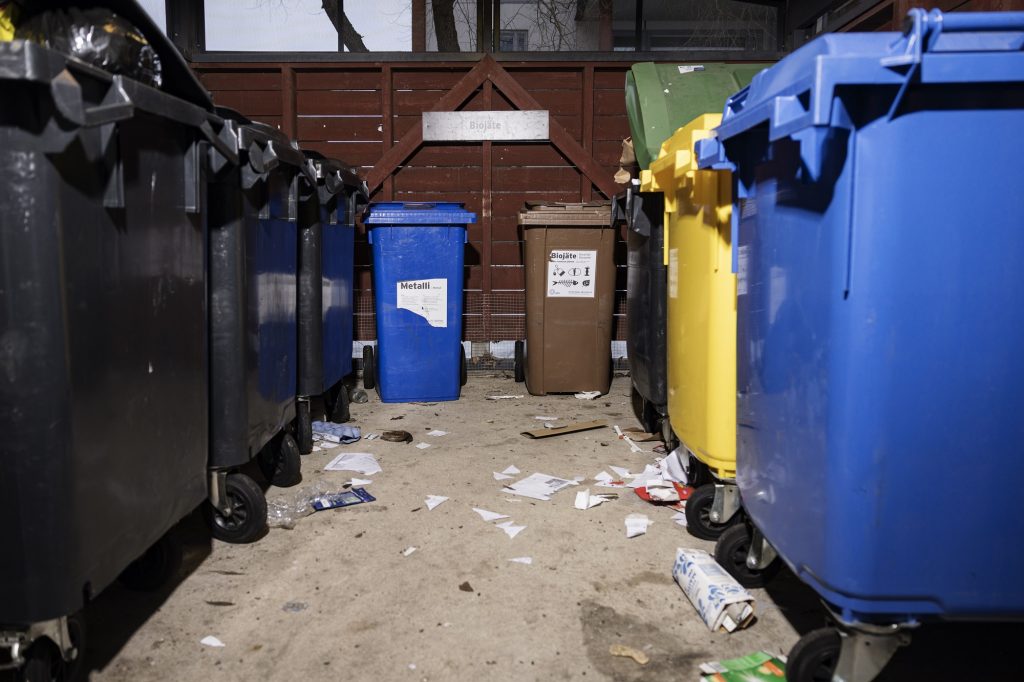
Heka aims to have the waste collection points of its locations provide optimal conditions for sorting waste so that tenants can easily place all the household waste that they sort at home in their correct containers. Heka is also constantly striving to improve sorting opportunities in its apartments. However, the implementation of sorting in apartments is primarily the tenants’ responsibility.
The walls of Heka’s waste collection points feature illustrated sorting instructions, and it is clearly marked on each container what kind of waste the container is for. Sorting instructions are also provided on the Heka website in three different languages. Links to HSY’s sorting instructions can also be found on the HSY website. The Ekoekspertti section of the Heta application for tenants features tips for sorting and sustainable living in general. The Ekoekspertti section also features small challenges through which tenants can think of and try out various things related to sustainable everyday routines and living. Property maintenance operatives can also help with any sorting problems.
“It’s challenging to reach all tenants, spark enthusiasm in them and get them to follow the instructions. Some may not realise that someone has to tidy up the waste facilities and carry items away – they do not just disappear by themselves. Any unsuitable items at the waste collection point are not transported by the waste management company for recycling. Instead, property maintenance operatives have to go pick them up and transport them separately,” Lindfors explains.
“Luckily, every tenant can contribute to the tidiness of the waste collection point and the pleasantness of their home building through their own actions,” says Lindfors encouragingly.
